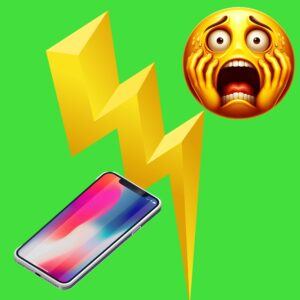 Last week I had an attack of nomophobia and didn’t even know it. Go figure. To enlighten you, Merriam-Webster defines nomophobia as the fear of being without access to a working cell phone.
Last week I had an attack of nomophobia and didn’t even know it. Go figure. To enlighten you, Merriam-Webster defines nomophobia as the fear of being without access to a working cell phone.
MY NOMOPHOBIA ATTACK
My day started normally with coffee, and while the Today show was running, scanning the New York Times, the Washington Post, and the Houston Chronicle for late-breaking news. And, of course, reading my email.
Around 8 a.m., my husband and I left for an appointment in Houston; the one-way drive is two and a half hours. We were about two miles down the road when I realized that, while I had packed my Kindle Reader, I had left my cell phone behind. YIKES!
Decision time. My first impulse was to demand that we turn around and retrieve my android. However, we had had a heated discussion an argument about what time to leave so we would not be late, and turning around would delay us. So, wanting to keep the peace, I opted to forge ahead and spend the next seven hours naked.
Surely, I could manage until we returned to the ranch. After all, I was wearing my smartwatch to catch calls, texts, and emails, and my husband had his own cell and smartwatch.
NOT!
NOMOPHOBIA IN THE U.S.
According to Forbes, we in the U.S. now spend an average of eight hours daily, engaging with digital media. Our smartphones are the gizmos of choice, although tablets, laptops, and desktops are also employed.
Recent studies indicate that nomophobia is increasing across various demographics. Last year, approximately 66% of us experienced some level of nomophobia.
The malady is so real that a website, nomophobia.com, exists where people give their testimonials, just like in Alcoholics Anonymous. The website can be viewed in English, Spanish, and Portuguese.
You can take a test to see how you rate.
Who knew?
NOMOPHOBIA SYMPTOMS
According to the National Institute of Health, Usual symptoms and signs of nomophobia are:
- Anxiety
- Respiratory alterations
- Trembling
- Perspiration
- Agitation
- Disorientation
- Tachycardia.
To be truthful, I did experience anxiety and agitation. After the first bit of disquiet wore off as I began to read a book from my Kindle, fits of agitation would occasionally wash in.
Note: Nomophobics will go to extraordinary lengths to recover a phone just to ease their yips.
HANDLING NOMOPHOBIA
“NO MObile PHone PhoBIA” (no mobile phone phobia) has not made it into the Diagnostic and Statistical Manual of Mental Disorders yet, so no treatments are listed. However, Medical News Today reports that a doctor or psychologist will likely recommend treatment options like those used to address other phobias, such as:
- Cognitive behavioral therapy: In this therapy, a person confronts the underlying thoughts that contribute to the phobia.
- Desensitization, or exposure therapy: This approach involves gradually exposing a person to the thing they fear. In nomophobia, a doctor may expose a person to a lack of access to their phone.
- Hypnotherapy: Hypnotherapy involves a therapist guiding a person through imagery to help them develop self-soothing techniques when confronted with not having access to a phone.
NOMOPHOBIA LAST THOUGHTS
The experience has left me wondering how I managed to live more of my life without a smartphone than with one. Admittedly, I love the ability to communicate immediately when on a long driving trip. It is unfathomable that I have driven alone (pre-cell days) from Houston to Texarkana, Texas, as well as from Houston to Dallas. Today, I get spooked just cruising around my county without the opportunity to immediately summon assistance.
However, smashing my obsession with following breaking news is my new goal. Maybe I should leave my phone behind more often.
Sign up on www.mariewatts.com to receive future Stories About Life delivered to your email address or read more stories by clicking here.

Recent Comments